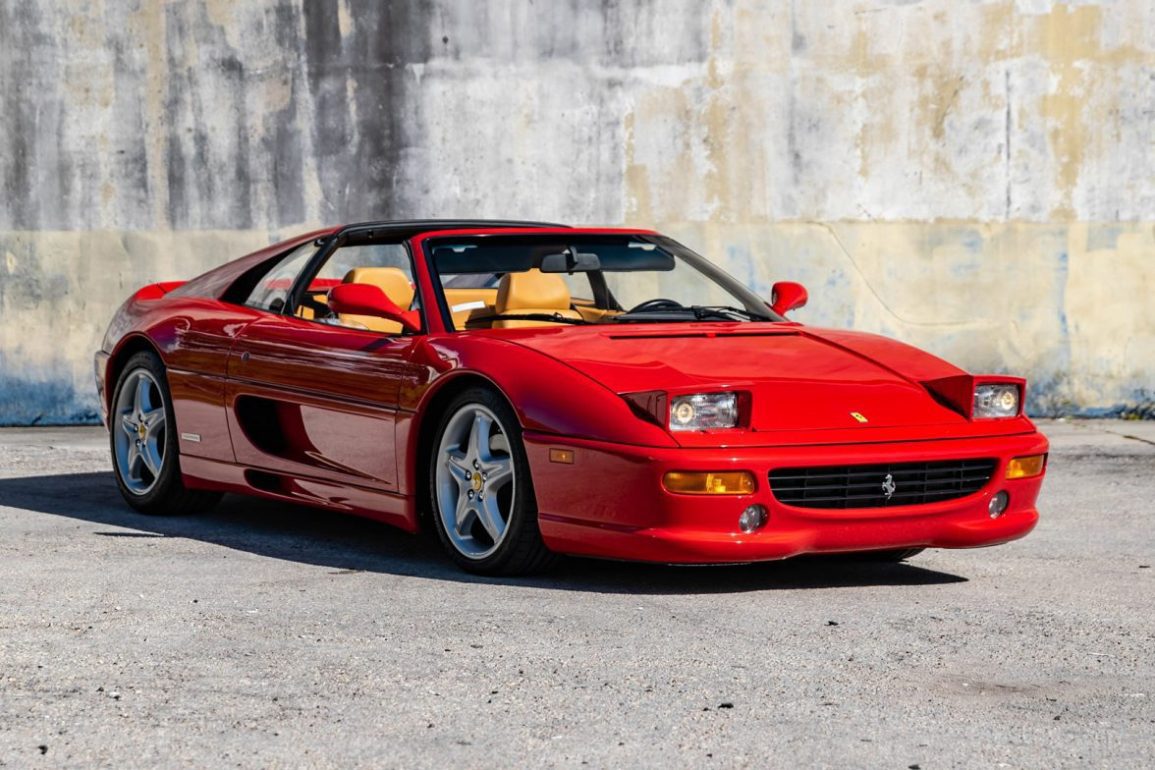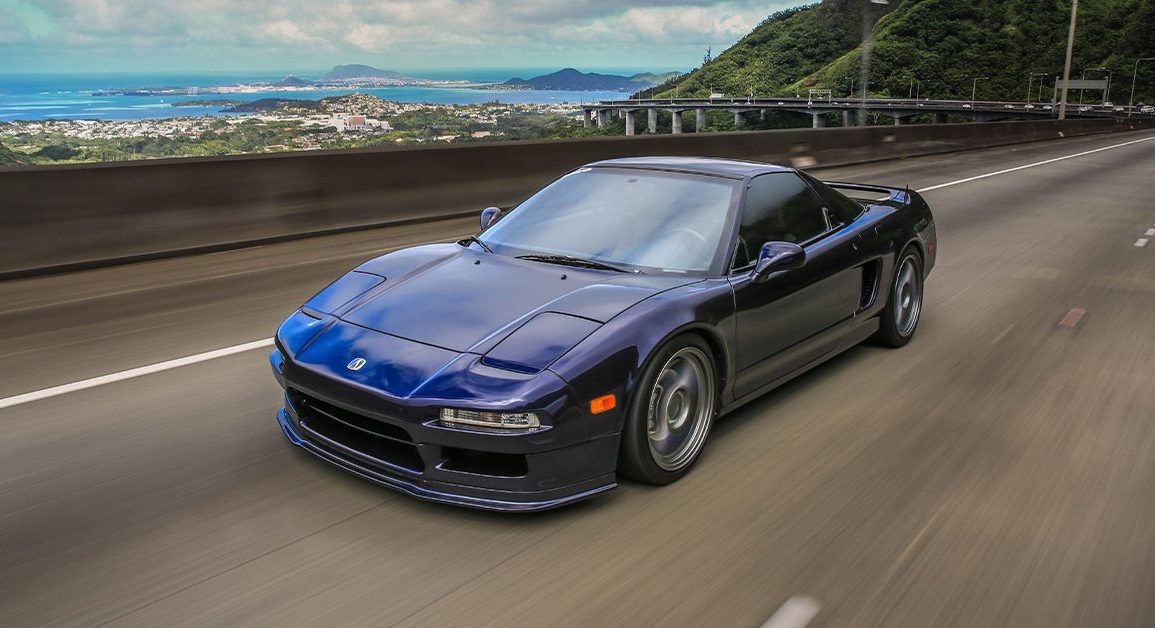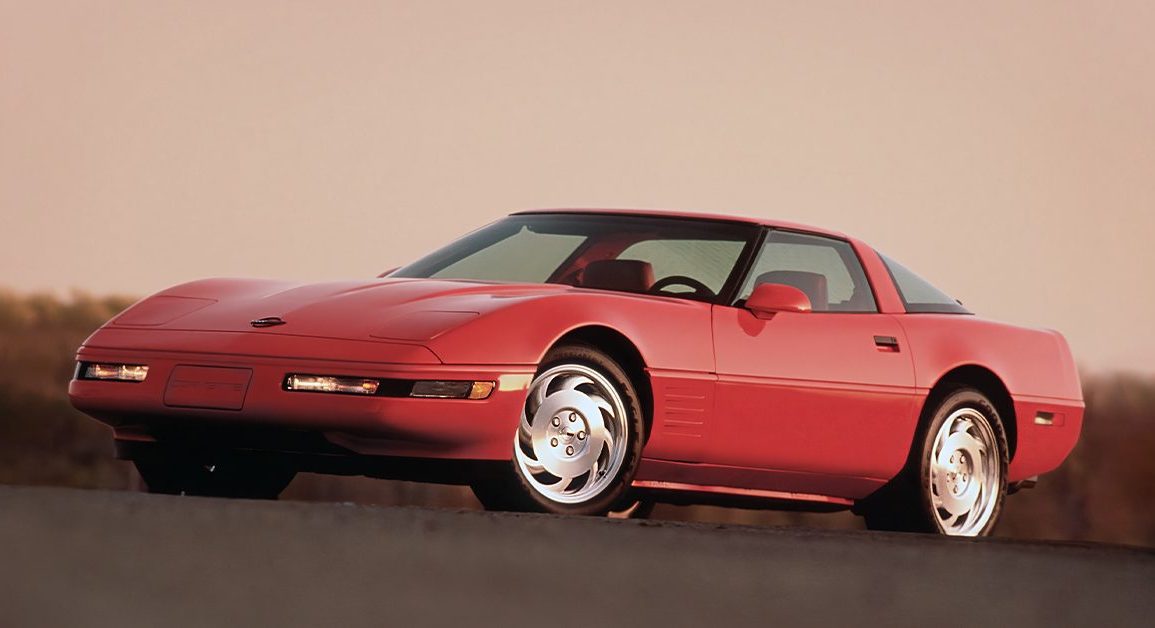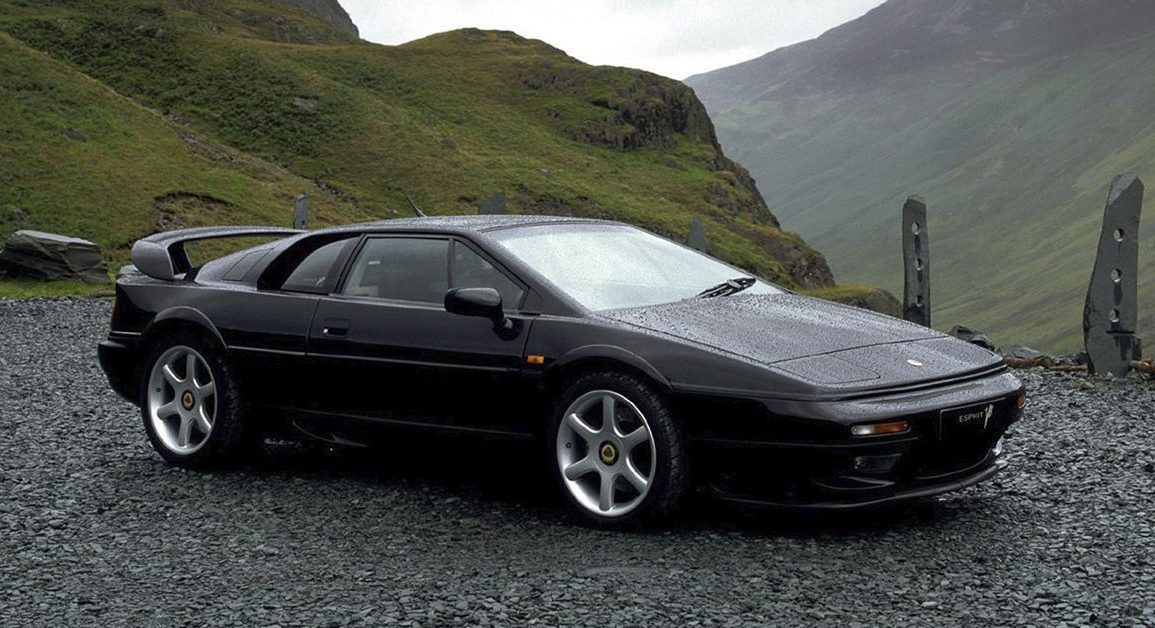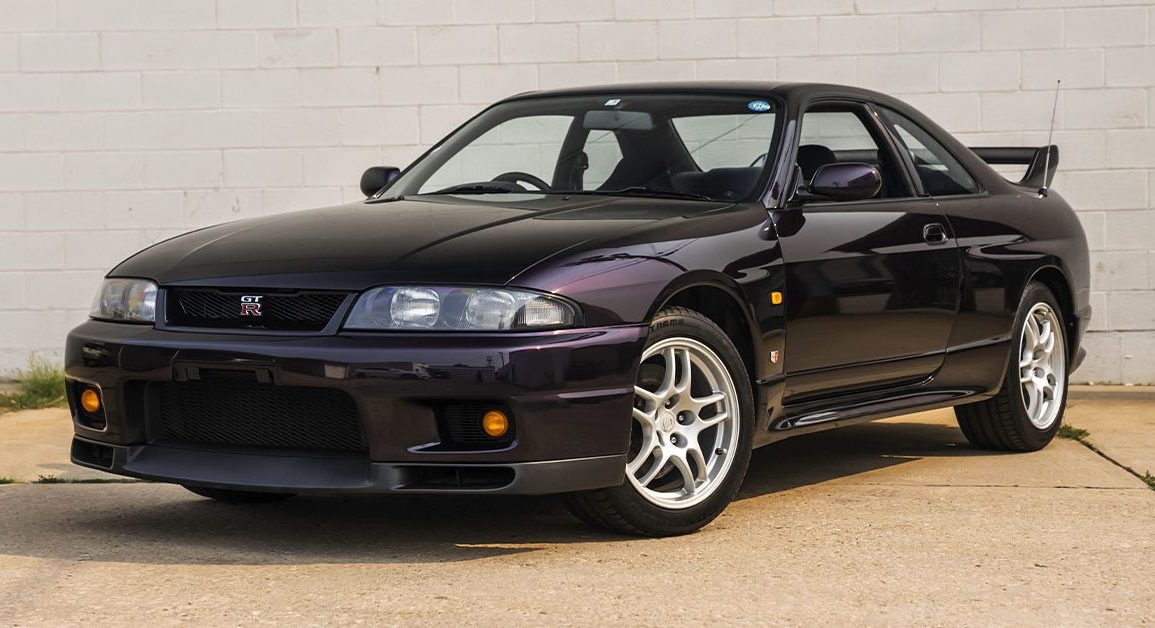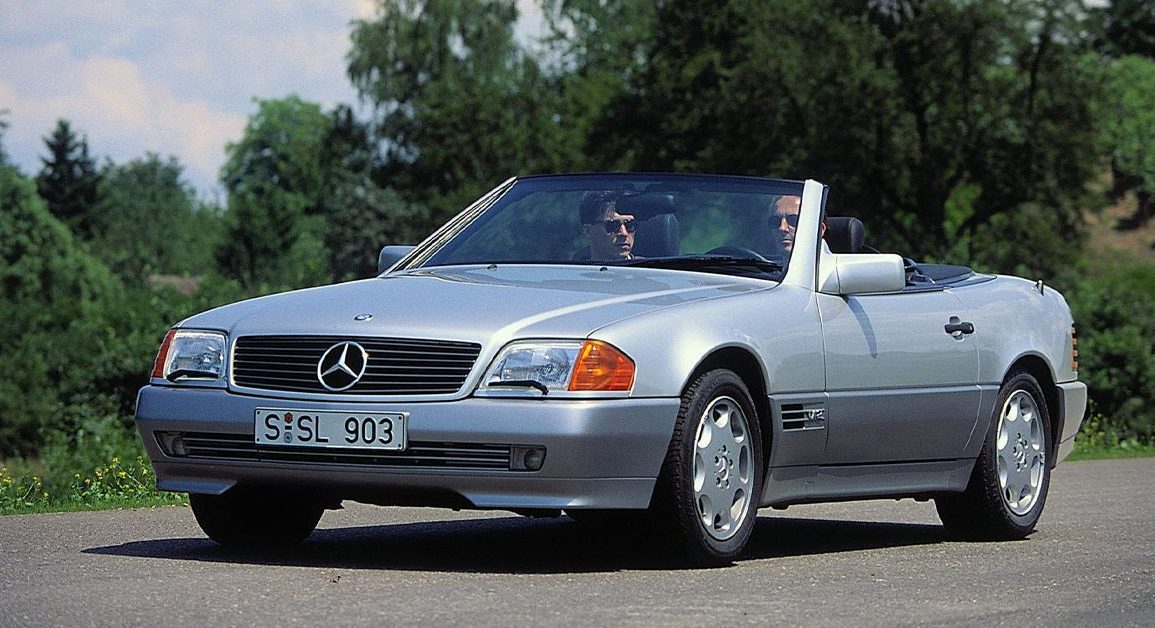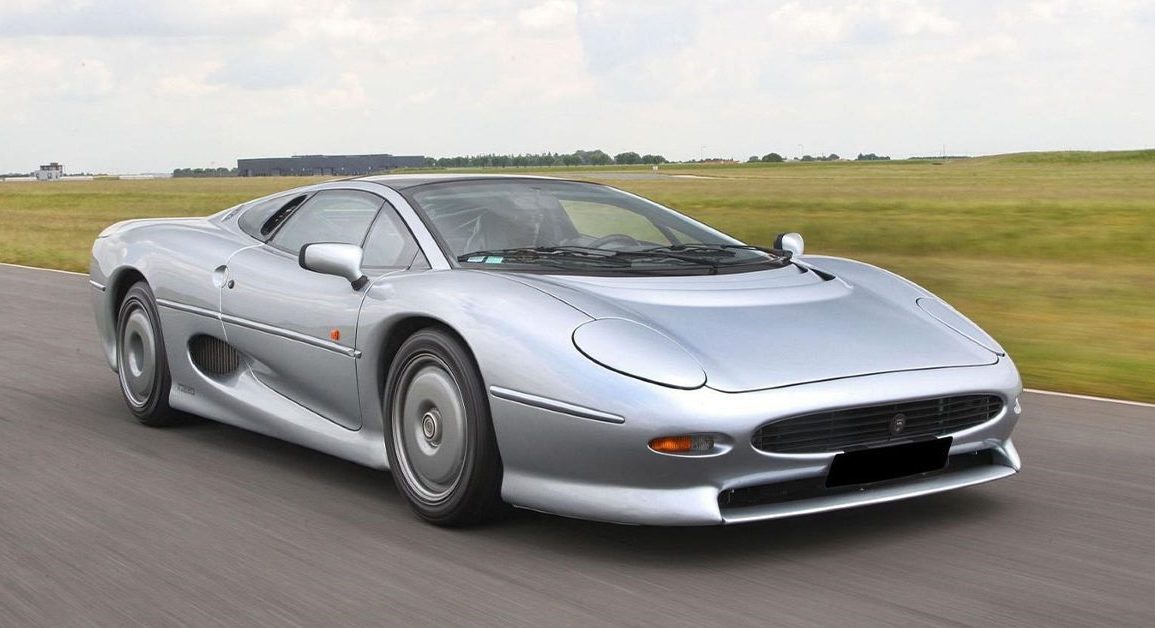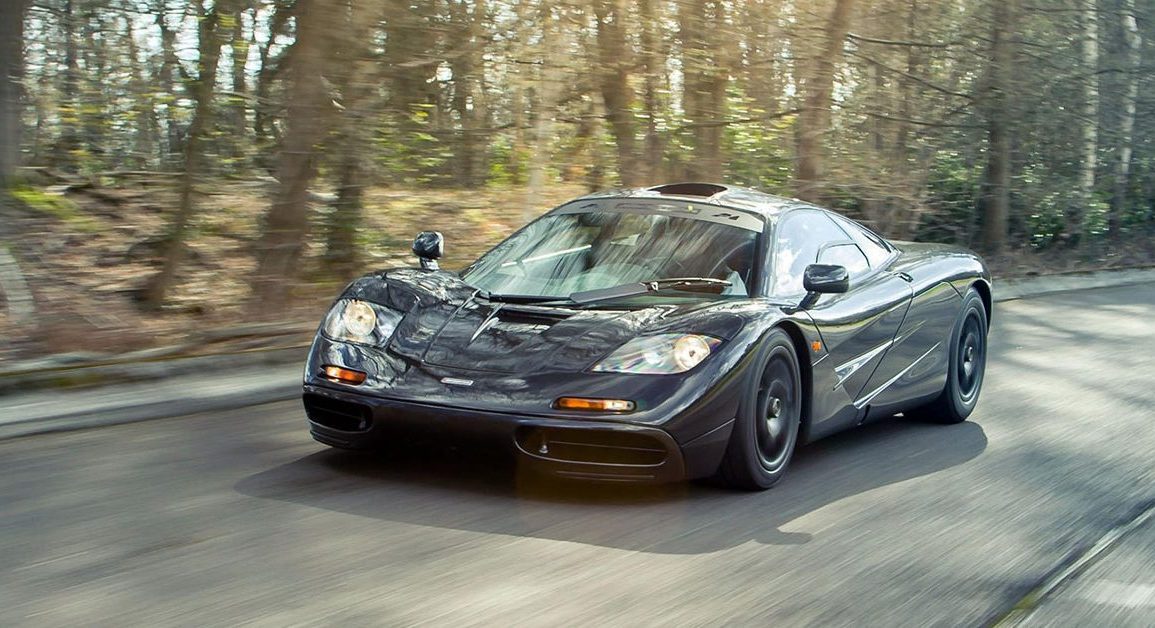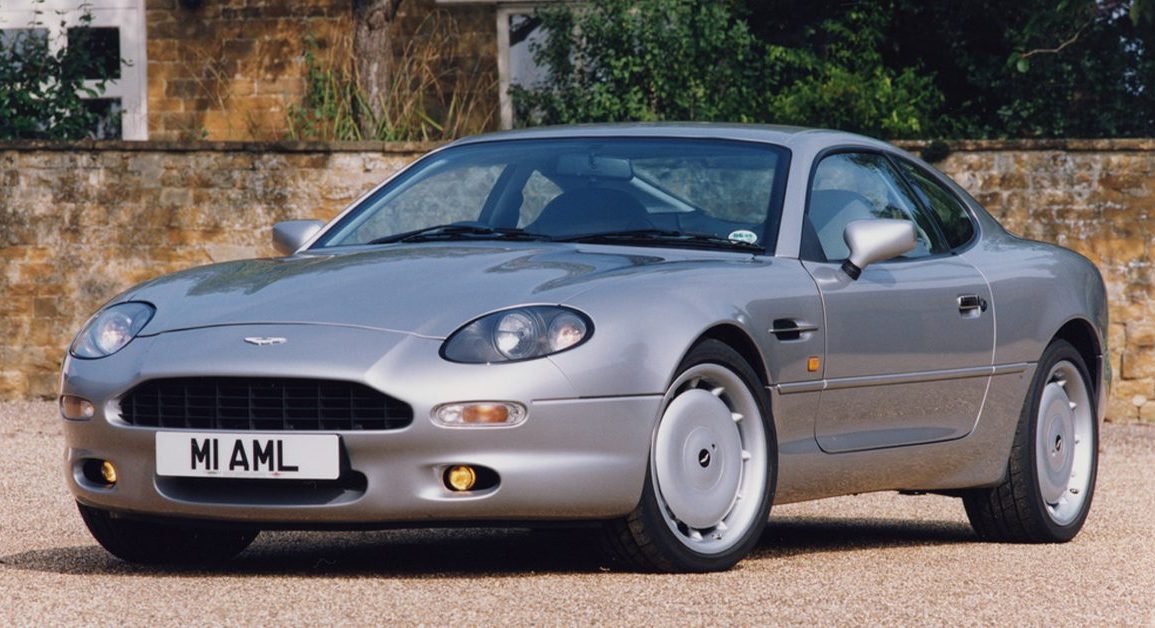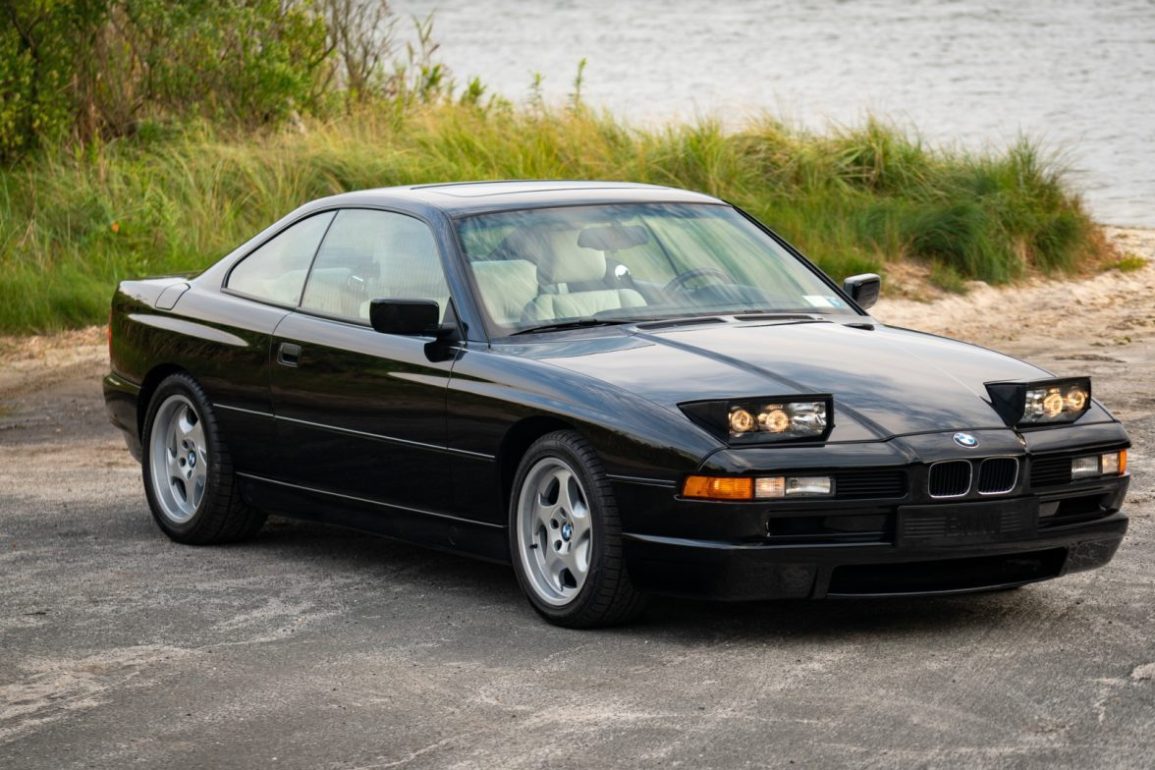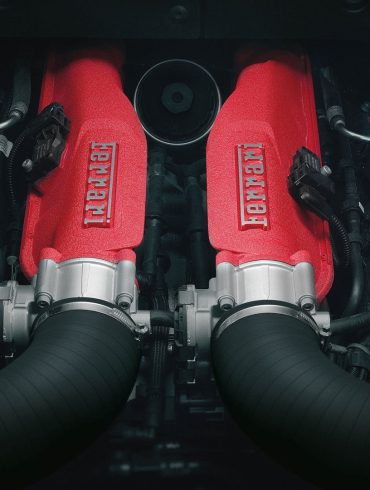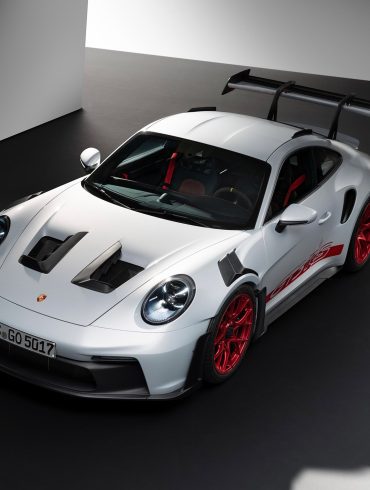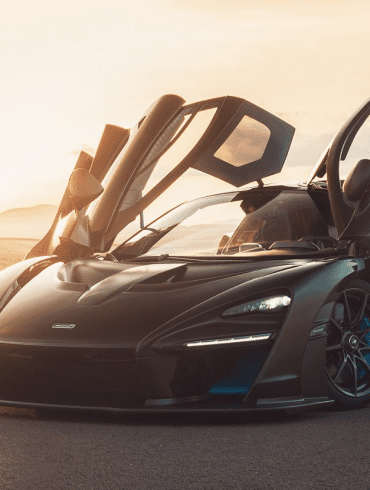Most Beautiful Cars Of The 1990s
Updated September 2023 by Eduardo Zepeda
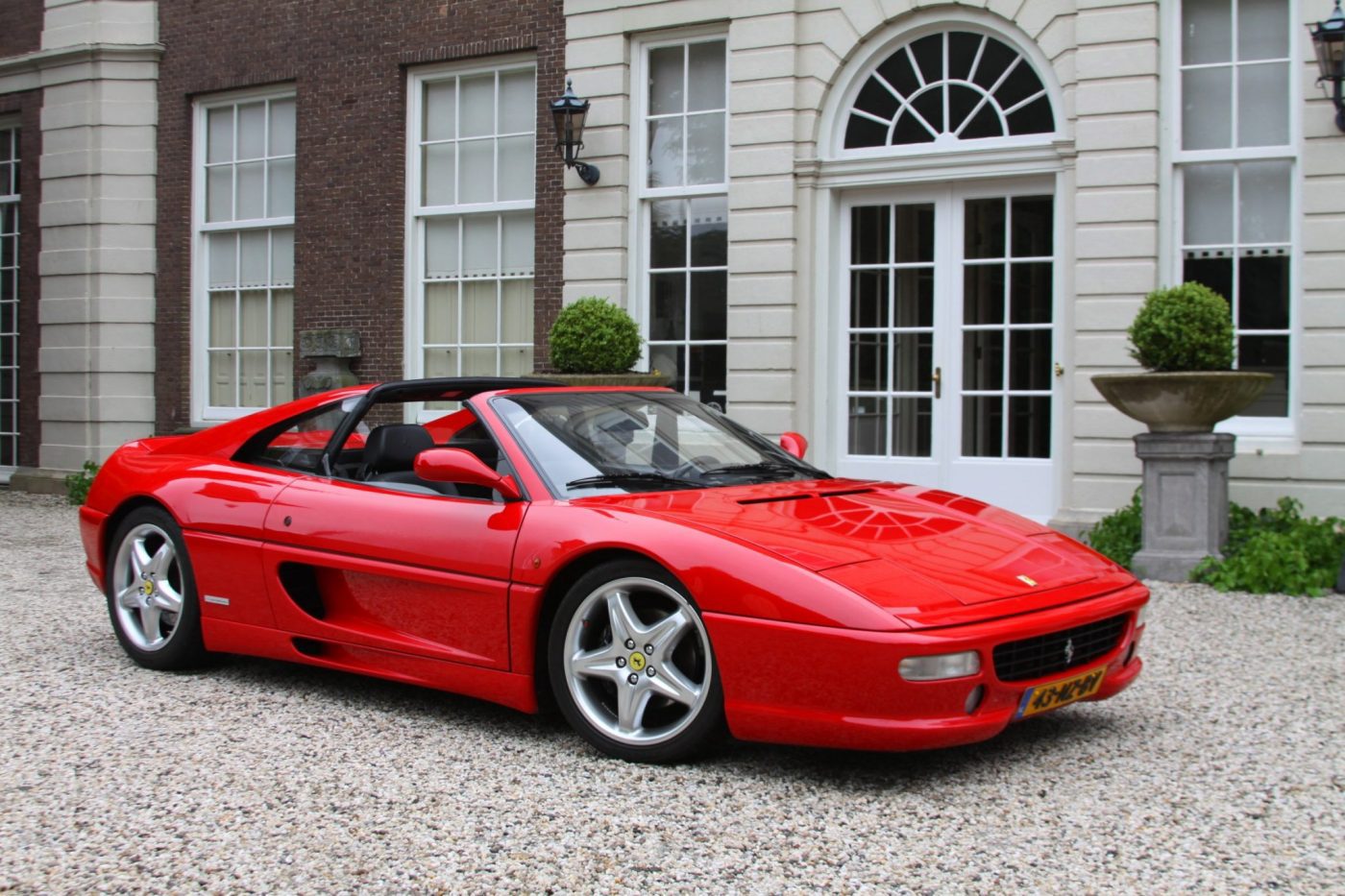
The 1990s brought us highly technologically advanced vehicles that were equally stunning
About Our Selections
The 1990s saw car design become more refined and globally influenced. Aerodynamic efficiency remained a key focus, leading to smoother, more rounded shapes and integrated bumpers. Curves replaced the hard edges of the 80s, giving cars a more organic and flowing appearance. Inside, ergonomics and comfort were prioritized, with driver-focused cockpits and improved materials. Japanese and European design trends gained significant influence, leading to a greater emphasis on minimalist aesthetics and functional simplicity. This era also saw the rise of the "bio-design" movement, which drew inspiration from natural forms and organic shapes, resulting in cars with softer, more sculpted lines. The 1990s marked a transition towards a more sophisticated and internationally inspired design language, paving the way for the modern automotive aesthetic.
Some of the most memorable and visually stunning automobiles ever produced debuted in the 1990s. Vehicles from that era still turn heads and spark memories of simpler times because their designers and engineers pushed the envelope. From extinct features like the omnipresent pop-up headlights to massive targa tops, the 1990s produced a wide range of cars that continue to fascinate car fans and collectors to this day who can’t get enough of these sleek sports cars and beautiful luxury exotics. In this article, we'll take a trip down memory lane and look at some of the most stunning vehicles of the 1990s, paying tribute to the innovative combination of art and technology that distinguished that decade.
1994 Ferrari F355 GTS
Sexiest Ferrari ever?
Why We Picked It:
As part of the F355 lineup, Ferrari added the GTS in 1995. The GTS version was based on the F355 Berlinetta but had a removable "targa-style" roof. The F355 GTS used the same 40-valve V8, producing 375 hp and 268 lb-ft of torque. The Berlinetta shared all the same other specs.
The V8 engine can reach an impressive 8,250 rpm and has a throaty, gruff, quintessentially Ferrari tone. The 4.7-second 0-62 mph time and the 183 mph top speed were impressive then.
This Ferrari stands out because of its stunning good looks, the delightful click-clack of its gated shifter, and the roar of its powerful V8 engine.
The Ferrari is stunning, and it even has pop-up headlights, a throwback to the '90s. It was nearly identical to the 348 in size, but its redesigned body resulted from extensive wind tunnel testing.
Specifications:
Price: $60,000-$300,000
Engine: 4.0L V8
Power: 380 hp
Torque: 268 lb-ft
Transmission: 6-Speed Manual
Curb Weight: 2,976 lbs
Highlights:
The Ferrari F355 was one of the most visually stunning cars of the 1990s, thanks to Pininfarina's design.
The cabin features excellent materials and a gorgeous gated shifter, while the exterior design boasts perfect proportions. Its low profile and wide stance give the car a sense of power and elegance.
Learn More:
1990 Honda NSX
The ultra-sleek JDM
Why We Picked It:
In 1990, Honda released a revolutionary NSX, reinventing the supercar idea by fusing aesthetics, performance, and technology. Its aerodynamic and low-profile shell conceals a 270-horsepower V6 engine driving the back wheels. The sophisticated suspension and lightweight aluminum body gave it superb handling and responsiveness.
The NSX was the first production vehicle to use drive-by-wire technology for the throttle, titanium connecting rods, and variable valve timing. The NSX's exceptional balance and driving experience, though, were what made it stand out from the competition.
Through careful engineering, Honda was able to achieve nearly ideal weight distribution. Their ground-breaking aluminum monocoque chassis provided unrivaled rigidity, instant responsiveness, and precise ride.
In addition to its practicality and delightful driving experience, the NSX also excelled in driver comfort with its ergonomic cockpit design, advanced climate control systems, and superb visibility.
Specifications:
Price: $50,000-$150,000
Engine: 3.0L V6
Power: 270 hp
Torque: 210 lb-ft
Transmission: 5-Speed Manual / 5-Speed Auto
Curb Weight: 3,010 lbs
Highlights:
The NSX has a long, low profile with smooth, simple lines. Pop-up headlights that aid in improving the car's aerodynamics and streamlined appearance complement its tidy, uncluttered rear end to give it a more elegant appearance.
Formula One legend Ayrton Senna was involved in developing and testing of the NSX, which helped solidify the car’s reputation as a true high-performance sports car.
Learn More:
1991 Chevrolet Corvette
Sharp American muscle
Why We Picked It:
The 1991 Chevrolet Corvette is one of the sharpest and most gorgeous 'Vettes ever. The facelift that the C4 received that year became the pinnacle of the characteristic Corvette style of the iconic American automobile.
Group Lotus, a British engineering consultancy and performance car manufacturer, was acquired by General Motors in 1986 so that the C4 Corvette could serve as the basis for the world's fastest-production automobile.
Only a fastback coupé with a removable top panel was offered for sale when the ZR-1 debuted in 1989 and went on sale later that year. Its 11-inch-wider rear wheels and redesigned convex rear bumper set it apart from previous-generation Corvette coupes.
The exterior, cabin, and wheels of the 1991 ZR-1 and 1991 base model were revised that year. While maintaining its signature C4 profile, the 1991 facelift sported smoother, rounder body lines.
Specifications:
Price: $12,000-$30,000
Engine: 5.8L V8
Power: 375 hp
Torque: 370 lb-ft
Transmission: 6 -Speed Manual / 4-Speed Auto
Curb Weight: 3,465 lbs
Highlights:
The ZR-1 Corvette featured signature Corvette styling, and the ZR-1 came with wide rear haunches that gave the car a more aggressive look.
The C4 Corvette also featured very 80s and 90s pop-up headlights. The ZR-1 has four exhaust pipes neatly arranged in the rear bumper.
Learn More:
1996 Lotus Esprit
A genuine work of art
Why We Picked It:
One of the rarest supercars in history is the Isdera Imperator 1The Lotus Esprit V8 is a masterwork of British automotive design and engineering.
From its debut in the 1970s to its later iterations, like the 1996 V8 model, it boasted a sleek, aerodynamic shape ahead of contemporary sports cars. Its wedge-shaped body, pop-up headlights, and low-slung profile gave it a timeless, futuristic appeal.
The Esprit's distinctive silhouette is instantly recognizable. Its long, tapering hood, prominent rear spoiler, and clean lines create a sense of speed and elegance, making it a classic automotive design.
The 1996 Esprit V8 produces 350 horsepower and 295 lb-ft of torque from its 3.5-liter twin-turbocharged V8 engine, which allows it to accelerate from 0 to 60 mph in 4.4 seconds with a 175 mph top speed. The Lotus Esprit is a work of art revolutionizing sports cars by fusing power and beauty.
Specifications:
Price: $30,000-$70,000
Engine: 3.5L V8
Power: 350 hp
Torque: 295 lb-ft
Transmission: 5-Speed Manual
Curb Weight: 3,042 lbs
Highlights:
The Esprit V8 was a famous supercar among enthusiasts and collectors, praised for its performance, handling, and styling. It was also relatively rare, with only about 1,400 examples produced.
1996 was the year that saw the Esprit finally gain the V8 it had deserved for so long. The exterior was left alone except for some bigger wheels.
Learn More:
1993 Nissan Skyline R33
Unassuming gorgeousness
Why We Picked It:
The Skyline R33, part of Nissan's iconic GT-R lineage, is a car that enthusiasts and collectors hold in high regard, and some dare to call it the quintessential JDM. Under the hood, the R33 fits a 2.6-liter twin-turbocharged inline-six engine churning out 280 horsepower.
Its all-wheel-drive system and innovative ATTESA-ETS Pro technology delivered remarkable traction and handling, allowing it to tackle corners with precision. But what makes the R33 truly unique is its marriage of power and sophistication.
The sleek, aerodynamic design favors aesthetics and performance, while the precise engineering and advanced technology provide a thrilling driving experience.
The Nissan Skyline R33 is unique due to its innovative technology, powerful engine, and aerodynamic design. It remains an enduring symbol of Nissan's commitment to performance and engineering excellence and one of the best Japanese sports cars ever made.
Specifications:
Price: $30,000-$70,000
Engine: 2.6L Inline-Six
Power: 280 hp
Torque: 271 lb-ft
Transmission: 5-Speed Manual
Curb Weight: 3,373 lbs
Highlights:
The R33 introduced cutting-edge technology for its time, such as the ATTESA-ETS Pro all-wheel-drive system and the Super-HICAS four-wheel steering system.
Overall, the Skyline R33 is a well-rounded sports car with an outstanding balance of styling, performance, and handling, making it one of the most popular JDM cars
Learn More:
1992 Mercedes-Benz SL73 AMG
German sleekness at its best
Why We Picked It:
The Mercedes-Benz SL 600 R129, produced from 1992 to 2002, remains an enduring symbol of automotive luxury and sophistication. While its impressive specs, like the 6.0-liter V12 engine churning out 389 horsepower, deliver remarkable performance, its styling and design truly set it apart.
With its sleek and aerodynamic body, the SL 600 R129 exudes timeless beauty. Its retractable hardtop transforms it from a stunning coupe to an open-air roadster in seconds. The graceful, elongated hood and iconic chrome-accented grille evoke a sense of prestige and class.
Inside, the cabin is a masterpiece of refinement, featuring top-notch materials and attention to detail.
The elegant dashboard sports analog gauges that harken back to classic luxury. Every element is meticulously crafted. The Mercedes-Benz SL 600 R129 symbolizes enduring style and captivating design.
Specifications:
Price: $10,000-$30,000
Engine: 6.0L V12
Power: 389 hp
Torque: 420 lb-ft
Transmission: 5-Speed Automatic
Curb Weight: 4,365 lbs
Highlights:
The R129's interior is just as luxurious as its exterior. The seats are upholstered in leather, and the dashboard is trimmed in wood. Features a navigation system and a Bose sound system.
The R129's styling is timeless. It has a long, sloping hood, a swept-back windshield, and a wide stance. The car's curves are smooth and elegant, and the overall design is sporty and luxurious.
Learn More:
1992 Jaguar XJ220
The legendary six-cylinder misfit
Why We Picked It:
The year was 1984 when one of the heads of the Jaguar development department thought of a supercar that could rival the most modern and fastest supercars of the time, such as the Ferrari F40, the Lamborghini Diablo, the Bugatti EB110, or the Porsche 959.
Initial plans to have a V12 under the hood fell apart after Ford acquired Jaguar and the American and decided to turn to a legacy 3.5-liter twin-turbocharged V6 racing engine that developed 550 hp of power and torque.
The XJ220 could accelerate from 0 to 60 mph in less than 4 seconds and reach a mind-blowing top speed of 343 km/h. The Jaguar XJ220 concept car, designed by Keith Helfet was unveiled at the 1989 Birmingham Motor Show to great acclaim.
The XJ220 featured a carbon fiber monocoque chassis constructed from lightweight aluminum, enhancing its agility and performance.
Specifications:
Price: $300,000–$700,000
Engine: 3.5L Twin-Turbocharged V6
Power: 542 hp
Torque: 475 lb-ft
Transmission: 5-Speed Manual
Curb Weight: 3,025 lbs
Highlights:
Keith Helfet designed the XJ220, one of the most iconic supercar silhouettes ever. The car has a sleek, futuristic look, sharp lines, and an aggressive stance.
The XJ220 was the fastest production car until the arrival of the McLaren F1.
Learn More:
1992 McLaren F1
THE supercar
Why We Picked It:
McLaren designed the F1 to have the best possible power-to-weight ratio by balancing a lightweight body with a potent engine and cutting-edge aerodynamics. BMW's M Sport division produced the F1's engine, initially intended for the canceled M8.
The McLaren F1's transversely mounted 6.1-liter V12 engine developed 627 horsepower and 479 pound-feet of torque, allowing the car to accelerate from 0 to 60 miles per hour in just 3.2 seconds using an AP triple plate clutch.
The engine and hood received a 24-carat gold wash for heat dissipation. As one of the quickest, most technologically advanced, and arguably best-looking cars in history, the McLaren F1 has been rated the greatest supercar ever by enthusiasts and experts.
For ten years, until the Bugatti Veyron surpassed its top speed of 259 mph, the F1 was the fastest production automobile with a 240 mph top speed.
Specifications:
Price: $10,000,000–$20,000,000
Engine: 6.1L V12
Power: 627 hp
Torque: 479 lb-ft
Transmission: 6-Speed Manual
Curb Weight: 2,513 lbs
Highlights:
The McLaren F1 iconic design is the work of Gordon Murray, a British engineer considered one of the greatest automotive designers. Murray is also the designer of the McLaren MP4/4, which won the Formula One World Championship in 1988, 1989, and 1990.
The McLaren F1 combines stunning design, incredible performance, and cutting-edge technology. It's no wonder the F1 is still considered one of, if not the greatest supercars ever.
Learn More:
1994 Aston Martin DB7
Timeless sophistication
Why We Picked It:
Tom Walkinshaw Racing developed the DB7 for Ford Motor Company as a more compact alternative to the V8 Vantages. TWR used components from Jaguar and Ford to create the first conventional steel-bodied Aston Martin.
Ian Callum and Keith Helfet created the overall design, and the first-generation Jaguar XK8 inspired it. TWR also designed the in-line six-cylinder engine that displaced 3.2 liters, generating 335 horsepower and 361 lb-ft of torque.
The DB7 could reach 60 miles per hour in 5.9 seconds and a top speed of 162 miles per hour. Its engine featured a water-cooled Eaton Rootes-Type supercharger and Zytec electronic multi-point fuel injection.
The Volante convertible debuted in 1996, and Aston Martin followed it up with the Vantage, a more powerful version of the DB7 with a 6.0-liter V12 engine that produced 420 horsepower in 1999.
Specifications:
Price: $25,000–$45,000
Engine: 3.2L Inline-Six
Power: 335 hp
Torque: 361 lb-ft
Transmission: 5-Speed Manual
Curb Weight: 3,889 lbs
Highlights:
The DB7 was a critical and commercial success. It was named "Car of the Year" by Top Gear magazine in 1994 and helped revive Aston Martin's fortunes.
The DB7 has signature Aston Martin styling with sleek, curvaceous lines, pop-up headlights, and well-balanced proportions. The DB7 was produced from 1994 to 2004 and is now considered a modern classic.
Learn More:
1992 BMW 850 CSi
The dream coupe
Why We Picked It:
To keep up with its competitors, especially its long-time rival Mercedes-Benz, BMW needed a new strategy in the 1990s as the auto industry began to globalize. So, it sought to improve upon the success of the 850i/Ci by having BMW Motorsport develop a more potent version.
BMW's engineers had done everything they could to regain the prestige lost in the first generation of the 8 Series.
They fitted a mighty V12 and very complex engine management with electronic injection from Bosch Motronic. The CSi's engine was enlarged from 5.0 to approximately 5.6 liters, increasing power and torque to a respectable 380 hp and 406 lb-ft.
A six-speed manual transmission was coupled to the power plant. The 850 CSi had a top speed of 155 mph and could accelerate to 60 mph in 6 seconds.
Specifications:
Price: $70,000-$120,000
Engine: 5.6L V12
Power: 380 hp
Torque: 406 lb-ft
Transmission: 6-Speed Manual / 5-Speed Auto
Curb Weight: 4,239 lbs
Highlights:
Klaus Kapitza, well-known for his minimalist and aerodynamic designs, created the BMW 850 CSi. The 850 CSi is a sleek and elegant car that has aged gracefully.
The 850 CSi features sleek and elegant lines with an extended, low profile, smooth, flowing lines with many aerodynamic features, such as a sloping roofline, a rear spoiler, and pop-up headlights.


